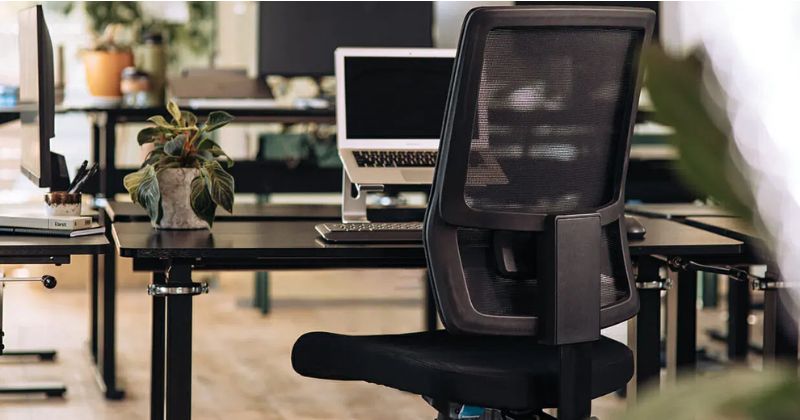Finding the best office chair that complements your desk is essential for both comfort and productivity. An ideal office chair not only enhances your workspace’s aesthetic but also supports your posture, ultimately improving your work experience. Here’s a guide to help you choose the best office chair that fits your desk, ensuring you make an informed decision.
1. Understand Your Workspace Needs
Before diving into chair features, evaluate your workspace. Consider the following factors:
- Desk Height: Measure the height of your desk. Standard desks are typically around 29-30 inches high. You can use this measurement to figure out how high your chair’s seat should be.
- Workspace Size: Assess the dimensions of your workspace. A compact office may require a chair that is both functional and space-saving.
- Type of Work: The nature of your work influences the type of chair you need. If you spend long hours at a desk, prioritize ergonomic features. For occasional use, a simpler design may suffice.
2. Seat Height Adjustment
One of the most crucial features of the best office chair is seat height adjustment. A chair should allow you to sit comfortably with your feet flat on the floor, thighs parallel to the ground, and arms at a 90-degree angle when typing.
- Adjustable Range: Look for chairs with a height range that accommodates both your height and your desk height. Most office chairs have a height adjustment of 15 to 20 inches.
3. Seat Depth and Width
The seat depth and width contribute significantly to comfort. A chair that is too deep or too shallow can cause discomfort over time.
- Depth: When sitting back in the chair, there should be about 2-4 inches between the back of your knees and the front edge of the seat. This allows for circulation while sitting.
- Width: Ensure the seat is wide enough to allow for comfortable movement. A width of 18-20 inches is typical for many office chairs.
4. Lumbar Support
Lumbar support is vital for maintaining good posture, especially during long hours of work. The best office chairs offer adjustable lumbar support that conforms to your lower back.
- Adjustability: Look for chairs that allow you to adjust the height and firmness of the lumbar support. This customization helps reduce lower back pain.
- Shape: The lumbar support should follow the natural curve of your spine. Consider trying the chair before purchasing to ensure it fits your back well.
5. Armrests
Armrests can greatly enhance comfort by reducing shoulder strain. However, they should not hinder your movement or be too high for your desk.
- Adjustable Armrests: Opt for chairs with adjustable armrests that can move up and down, forward and backward, or even pivot. This ensures they align with your desk height.
- Width: Ensure the armrests are wide enough to support your arms comfortably without being too far apart.
6. Material and Cushioning
The material and cushioning of your chair affect both comfort and durability.
- Fabric: Look for breathable materials, especially if you work in a warm environment. Mesh chairs offer excellent airflow, while fabric chairs can provide a softer feel.
- Cushioning: A well-cushioned seat helps alleviate pressure points. However, overly soft cushioning may cause you to sink in too deeply, affecting posture. Aim for a balance between firmness and softness.
7. Mobility and Stability
If your workspace requires movement, consider a chair with wheels that suit your floor type.
- Caster Type: For carpeted floors, opt for softer wheels; for hard floors, harder wheels will glide better.
- Stability: Ensure the chair has a stable base. A five-point base is standard for office chairs, providing balance and preventing tipping.
8. Style and Aesthetics
While functionality is key, the style of the chair matters too, especially in a professional setting.
- Design: Choose a design that matches your desk and overall office decor. A cohesive look can enhance the workplace atmosphere.
- Color: Consider neutral colors for versatility or vibrant shades to add personality to your workspace.
9. Budget Considerations
Office chairs come in various price ranges. Determine your budget beforehand to narrow down options.
- Quality vs. Price: While it’s tempting to go for cheaper options, investing in a quality chair pays off in terms of comfort and durability.
- Warranty: Look for chairs that come with a warranty. A lengthier warranty may be a sign of the product’s trust from the manufacturer.
10. Try Before You Buy
Before making a purchase, try the chair as much as possible. Sit in it, adjust it, and see how it feels. Many retailers offer showrooms where you can experience the chair firsthand.
Conclusion
Choosing the best office chair that fits your desk involves careful consideration of various factors, from size and adjustability to material and design. By following this guide, you can find a chair that not only fits well with your desk but also enhances your comfort and productivity. Remember, the right chair is an investment in your health and work performance, so take the time to choose wisely.
For more insightful articles related to this topic, feel free to visit- ( Click Here )



